 W
WThe 7th Maryland Regiment was authorized on 16 September 1776, for service with the Continental Army and was assigned on 27 December 1776. The regiment was composed of eight companies of volunteers organized from Frederick and Baltimore counties of the colony of Maryland.
 W
WThe 51st Iowa Volunteer Infantry Regiment was raised in Iowa in 1898 for service in the Philippines Theater of the Spanish–American War. The volunteers trained in Iowa and San Francisco at Camp Merritt near the Presidio, where a monument to the regiment still stands. While in California nearly 27 men died from disease, which made disease the leading cause of death amongst the men. From California they embarked on the SS Pennsylvania for Manila. After a lengthy and illness plagued voyage, the regiment arrived and were made to wait on board ship near Cavite.
 W
WAtlantic City Air National Guard Base is a United States Air National Guard base located at Atlantic City International Airport in New Jersey. The base is home New Jersey Air National Guard's 177th Fighter Wing, operating F-16C Fighting Falcon.
 W
WGeneral Joseph Bridger was a military and political figure in the Colony of Virginia. Some sources relate him as "Colonel" (Col.) Bridger.
 W
WCamp Belknap was a military camp during the Mexican–American War.
 W
WCamp Hancock near Augusta, Georgia was a military cantonment that was opened during World War I.
 W
WCamp John Wise is a former United States Army military garrison, located in San Antonio, Texas. During World War I it was used as a training field for the U. S. Army Balloon Corps between 1917 until 1919.
 W
WCamp Sherman is an Ohio Army National Guard training site near Chillicothe, Ohio. It was established in 1917 after the U.S. entered World War I and today serves as a training site for National Guard Soldiers.
 W
WEdgar Thomas Conley was an officer in the United States Army who served as Adjutant General from 1935 to 1938.
 W
WCrateology was the 'science' of identifying the contents of Soviet shipments to the Island of Cuba carried out by the Central Intelligence Agency during the Cuban Missile Crisis.
 W
WMount Defiance is an 853 ft (260 m) high hill on the New York side of Lake Champlain, in the northeastern United States. It is notable in that the hill militarily dominates both Fort Ticonderoga and Mount Independence, but it was deemed inaccessible so never fortified. Mount Defiance was previously known as Sugar Loaf.
 W
WThe Fairfield Aviation General Supply Depot is a former Aviation Section, U.S. Signal Corps military facility, located adjacent to Wilbur Wright Field in Riverside, Ohio.
 W
WA number of units used fencibles in their title before and during the American Civil War. Example include the Texas Fencibles and the Bellefonte Fencibles. A Texas unit called the Panther City Fencibles existed from 1883 to 1898, and a modern Texas State Guard unit has used the name since 1993. The Old Guard State Fencibles existed in Philadelphia from 1812 through 1981.
 W
WFirebase Neville is a former U.S. Marine Corps base north of Khe Sanh in Quảng Trị Province, Vietnam.
 W
WA Footnote to History: Eight Years of Trouble in Samoa is an 1892 historical non-fiction work by Robert Louis Stevenson describing the contemporary Samoan Civil War.
 W
WFort Klamath was a military outpost near the western end of the Oregon Trail, between Crater Lake National Park and Upper Klamath Lake in Klamath County, Oregon, United States. The Fort Klamath Site, about a mile southeast of the present community of Fort Klamath, Oregon, is listed on the U.S. National Register of Historic Places
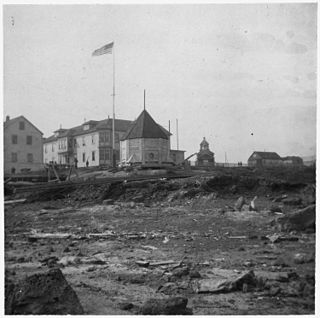 W
WFort St. Michael was an installation of the United States Army at St. Michael, Alaska, on St. Michael Island in Norton Bay on the central west coast of Alaska. The fort was in active service between 1897 and 1925, and was originally established to maintain order during the Klondike Gold Rush for which St. Michael was a major transshipment point for people and goods moving up the Yukon River, whose mouth is nearby but is inaccessible to ocean-going ships. The installation later became the endpoint of the WAMCATS cable, a military communications cable extending across Alaska. Its importance declined substantially after the Alaska Railroad was completed in 1923, providing year-round service to the interior which was superior to the seasonal transport service of the river. The post was closed in 1925, and the military burials of its graveyard relocated to Sitka National Cemetery in 1929. When surveyed in 1976, only three buildings remained of the once extensive installation.
 W
WPeter Charles Harris was an officer in the United States Army who served as Adjutant General of the U.S. Army from 1918 to 1922.
 W
WThe Hearts of Oak were a volunteer militia based in the British colonial Province of New York and formed circa 1775 in New York City. The original name was evidently adopted in emulation of the enlightened Corsican Republic, headed by Pasquale Paoli, which had been suppressed six years before, and which got considerable sympathy in Britain and its colonies.
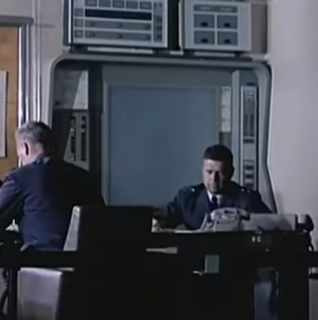 W
WIconorama was a Cold War electronic projection system for graphic presentation ordered by the USAF in 1959.
 W
WThe Inter-American Peace Force (IAPF) was a peacekeeping force in the Dominican Republic from several countries from the Americas that was formed towards the end of the Dominican Civil War. It was established by the Organization of American States on 23 May 1965, after the United States's intervention in the Dominican Republic. It largely consisted of over 42,600 United States military personnel, plus the following troops were sent by each country;Brazil – 1,130 Honduras – 250 Paraguay – 184 Nicaragua – 160 Costa Rica – 21 military police El Salvador – 3 staff officers
 W
WJames White's Fort, also known as White's Fort, was an 18th-century settlement that became Knoxville, Tennessee, in the United States. The name also refers to the fort, itself.
 W
WThe Jeep trailer was a small, 1/4-ton payload rated, cargo trailer, designed in World War II, tailored to be towed by 1/4-ton U.S. Army jeeps. Versions of the quarter-ton jeep trailer remained in military use, by the U.S. or other countries, at least through to the 1990s.
 W
WRoger ap Catesby Jones was an officer in the United States Marine Corps and United States Army who was the longest-serving Adjutant General of the U.S. Army in U.S. history, holding the position from 1825 to 1852.
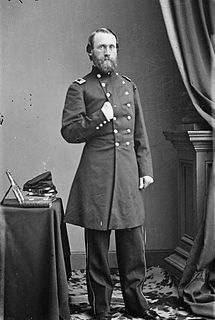 W
WRoger Jones served as Inspector General of the U.S. Army from 1888 to 1889. His father by the same name served as Adjutant General of the U.S. Army from 1825 to 1852.
 W
WAndrew F. Krepinevich Jr. is a defense policy analyst who is a distinguished senior fellow at the Center for Strategic and Budgetary Assessments.
 W
WMarkus Laubenthal is a Generalmajor in the German Army and the Chief of Staff of U.S. Army Europe, the first non-American to hold that post. He was born on December 4, 1962 in Aachen, Germany.
 W
WThe M38 Wolfhound was a 6×6 US armored car produced in 1944 by the Chevrolet division of General Motors. It was designed as a replacement for the M8 Greyhound series, but the end of the war in 1945 led to the cancellation of the project after the completion of a handful of prototype vehicles.
 W
WThe Malta War was a local conflict over land titles in what is now the state of Maine, reaching its peak in 1808 and 1809. The episode was near the town of Malta, now Windsor, Maine.
 W
WMcCalla Field was a U.S. military airfield located at Naval Station Guantanamo Bay in Guantánamo Bay, Cuba. The airfield was named for Bowman H. McCalla, who was a United States Navy admiral in charge of the Battle of Guantánamo Bay. The current field was expanded in 1941 when the original grass runway was replaced. Aviation facilities in the area first appeared in 1913 with a naval aviation camp.
 W
WThe Medal of Honor Memorial is installed on the Washington State Capitol campus in Olympia, Washington, United States. The granite obelisk was dedicated on November 7, 1976.
 W
WDuring the American Revolutionary War, the New York Provincial Company of Artillery was created by the New York Provincial Congress in 1776 to defend New York City from British attack.
 W
WDavid Hopkinson Nichols was the eighth Lieutenant Governor of Colorado, United States, serving from 1893 to 1895 under Davis Hanson Waite.
 W
WCharles Josephus Nourse was an officer in the United States Army who served as acting Adjutant General of the U.S. Army from 1822 to 1825.
 W
WOperation Giant Lance was an undercover military operation by the United States in which the primary objective was to apply military pressure towards the Soviet Union during the Cold War. Initiated on October 27, 1969, President Richard Nixon authorized a squadron of 18 B-52 bombers to patrol the glacier caps around Moscow and escalate the nuclear threat poised. The goal was to coerce both the Soviet Union and North Vietnam to agree on favourable terms with the US, and conclusively end the Vietnam War. The operation's effectiveness was also largely built on Nixon's consistent madman theory diplomacy, in order to influence Moscow's decision even more. The operation was kept top secret from both the general public and higher authorities within the Strategic Air Command, intended to only be noticed by Russian intelligence. The operation lasted one month before being called off.
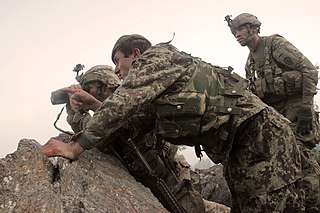 W
WOperation Hammer Down was a seven-day U.S.-led air-assault offensive in June 2011 designed to eliminate foreign fighters and training camps in the Watapur Valley of Kunar Province in Afghanistan in preparation of an eventual push into the Western Pech area. The operation's primary objective was to destroy suspected training camps at the northern end of the Watapur in order to interdict the flow of insurgents through the valley and forbid the Taliban from increasing their manpower in the western Pech. This operation was conducted by the 2nd Battalion 35th Infantry, 3rd Brigade Combat Team, 25th Infantry Division as a battalion-wide mission that spread each element throughout the area of operations
 W
WThe Panama Canal Division was a unit of the United States Army, established in order to ensure the United States could adequately defend the Canal Zone in Panama. When it was authorized in 1920, similar divisions were organized to defend Hawaii and the Philippines. The division was organized in 1921, and active until 1932.
 W
WThe Pennsylvania Line was a formation within the Continental Army. The term "Pennsylvania Line" referred to the quota of numbered infantry regiments assigned to Pennsylvania at various times by the Continental Congress. These, together with similar contingents from the other twelve states, formed the Continental Line. The concept was particularly important in relation to the promotion of commissioned officers. Officers of the Continental Army below the rank of brigadier general were ordinarily ineligible for promotion except in the line of their own state.
 W
WThe Primary Alerting System (PAS), was a network of land-line connections used by the Strategic Air Command (SAC) for command and control of its nuclear forces. PAS provided immediate and simultaneous voice communications to all (SAC) unit command posts and missile launch control facilities.
 W
WProject 404 was the code name for a covert United States Air Force advisory mission to Laos during the later years of the Second Indochina War, which would eventually become known in the United States as the Vietnam War. The purpose of the mission was to supply the line crew technicians needed to support and train the Royal Laotian Air Force, while Raven Forward Air Controllers were brought in to supply piloting expertise and guidance for running a tactical air force. The two programs together comprised Palace Dog.
 W
WSchuyler Island, also known as Schuyler's Island or Whitney Island, is a 161-acre (0.65 km2) uninhabited island in Lake Champlain. It is a part of the Town of Chesterfield in Essex County, New York, located between Port Kent, New York and Willsboro Bay, opposite Burlington, Vermont.
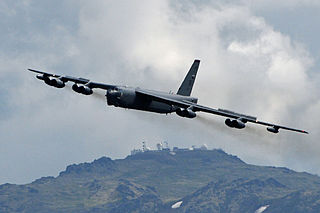 W
WThe Nike Site Summit is a historic military installation of the United States Army in Anchorage Borough, Alaska. The site, located in the Chugach Mountains overlooking Joint Base Elmendorf–Richardson, is the location of one of the best-preserved surviving Nike-Hercules missile installations in the state. The site's structures include a battery control area, a missile launch area, and several magazines. Units of the 43rd Air Defense Artillery Regiment, USARAL Artillery Group, United States Army Alaska, would have garrisoned the site. The site was built in 1957-58 and equipped with missiles in 1959. The site was in active service defending the United States from the threat of Soviet air strikes until it was decommissioned in 1979, after which sensitive militarily equipment was removed. The U.S. Army maintained the site into the 1980s before abandoning it. The site was listed on the National Register of Historic Places in 1996. A local non-profit group, Friends of Nike Site Summit, is actively attempting to preserve the site.
 W
WJames William Sutherland was a United States Army Lieutenant General, who served as commander of XXIV Corps during the Vietnam War.
 W
WUpshot-Knothole Dixie was the fourth test-firing of Operation Upshot–Knothole, an atomic weapons test series conducted in 1953 by the United States at the Nevada Test Site.
 W
WUnited States Army Security Agency (USASA) Field Station Augsburg was the site of a Wullenweber AN/FLR-9 (V8) radio direction finder, established during the Cold War. Field Station Augsburg was located on Gablingen Kaserne, near the village of Gablingen just north of Augsburg in Bavaria, West Germany. It was one of nearly 20 field stations positioned strategically around the world by the U.S. Armed Forces during the Cold War. Field Station Augsburg opened in 1970 and closed in 1998, at which time it was turned over to the German government.
 W
WThe Virgin Islands National Guard (VING) was federally recognized on October 19, 1973 in a ceremony officiated by Major General La Vern E. Weber, Director of the United States Army National Guard. Major Leayle Galiber was appointed acting Adjutant General and took command of the first two units to be activated, a Headquarters Detachment and the 661st Military Police Company both on St. Croix.
 W
W"We Shall Keep the Faith" is a poem penned by Moina Michael in November 1918. She received inspiration for this poem from "In Flanders Fields". The "poppy red" refers to Papaver rhoeas.
 W
WThe Jewish Chapel at the United States Military Academy is a synagogue and chapel for the worship of Jewish cadets, faculty and members of the West Point community. Construction began in 1982 and was completed on November 13, 1984, it was the culmination of 20 years of effort on the part of the West Point Jewish Chapel Fund, a private nonprofit organization which raised more than US$7.5 million for its construction.
 W
WRobert Williams was an officer in the United States Army who served as Adjutant General of the U.S. Army from 1892 to 1893.